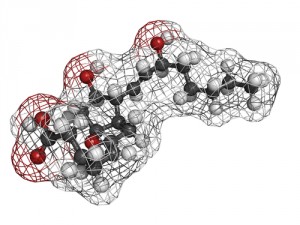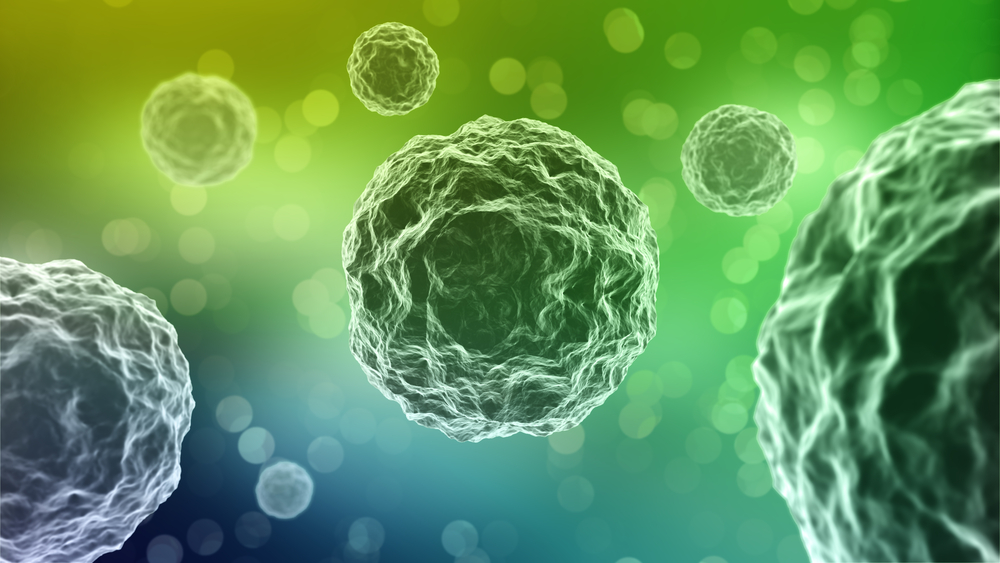 Colon cancer is one of the three highly fatal cancers caused by a protein called Ras. Professor Dimitrios Stamou, head of a multidisciplinary team in bio-nanotechnology and nanomedicine at University of Copenhagen, is working to right the wrongs caused by mutated or misplaced Ras. He, along with post-doc Jannik Bruun Larsen, authored a recently published article in Nature Chemical Biology—“Membrane Curvature Enables N-Ras Lipid Anchor Sorting to Liquid-ordered Membrane Phases“–that depicts how Ras becomes misplaced and leads to cancer.
Colon cancer is one of the three highly fatal cancers caused by a protein called Ras. Professor Dimitrios Stamou, head of a multidisciplinary team in bio-nanotechnology and nanomedicine at University of Copenhagen, is working to right the wrongs caused by mutated or misplaced Ras. He, along with post-doc Jannik Bruun Larsen, authored a recently published article in Nature Chemical Biology—“Membrane Curvature Enables N-Ras Lipid Anchor Sorting to Liquid-ordered Membrane Phases“–that depicts how Ras becomes misplaced and leads to cancer.
“If the curvature of the cell is right, Ras goes to the right place,” said Dr. Stamou in a news release from the university. “If the membrane is too straight or bent, it does not. And Ras is very much like any other worker. If it never finds the way to its work place, it is not likely to get any work done.” When in its proper location at the interior wall of the cell membrane, Ras proteins help regulate cell division and growth. If something triggers Ras to behave abnormally, misregulation can allow cancer to develop.
In the team’s article, a series of experiments discovered that membrane curvature was required for Ras to associate with the cell membrane. Ras’ enrichment in raft-like liquid-ordered phases resulted from lateral pressure relief once it was anchored in the membrane.
This new insight may help researchers find alternative strategies to fight cancers associated with Ras mutations, which include colon, lung, and pancreas cancers. To date, these Ras-associated cancers have been considered “undruggable,” necessitating new directions for treatment.
“If Ras goes off the rails because of changes in the curvature of the cell, perhaps we should target whatever changes the shape of the cell membrane,” said Dr. Stamou. “This is a change of perspective similar to when we went from flying with hot air balloons to taking off with fixed wings and propellers.”
This notion has been explored only in simulations of cancer in the laboratory. A necessary next step will be to use living systems. “It will be ten times more difficult to uncover these effects in living systems but it needs to happen,” said Dr. Stamou. “We have started and we really hope others will follow.”
Indeed, other scientists may see a correlation between the shape of the membrane and Ras misregulation as controversial, according to Dr. Larsen. However, Dr. Larsen clearly identified how Ras is more likely to attach to the simulated membranes of small vesicles over other sizes that are less curved. “For more than a decade, people thought that the constituents of the cell wall was what controlled where Ras was localized,” said Dr. Larsen. “We have shown that at least one other aspect, namely membrane curvature, governs where Ras ends up in the cell and is therefore likely to be a factor in cancer development.”
There may be a long path ahead to bring these discoveries to a cure for colon cancer, but Dr. Stamou’s team will continue to work toward correcting Ras mutations with future experiments. “It may prove complicated to develop a drug that changes the shape of cells but I am certain that the discovery of the shape/misregulation-correlation will at least lead to new ways to diagnose cancers,” he said.


